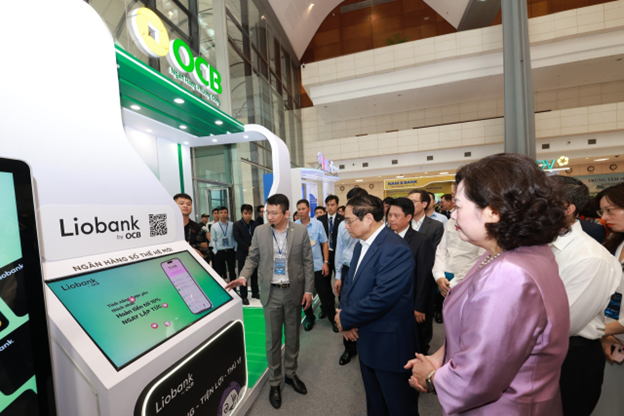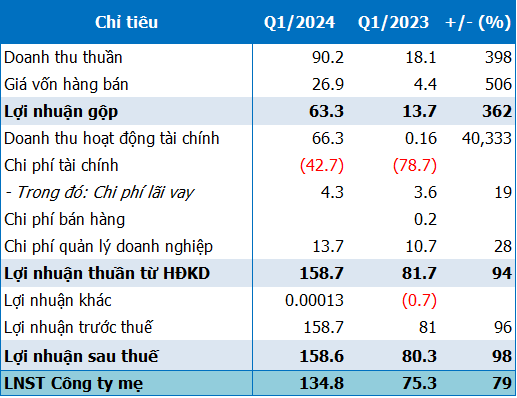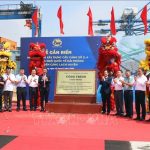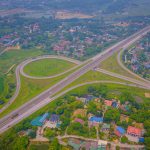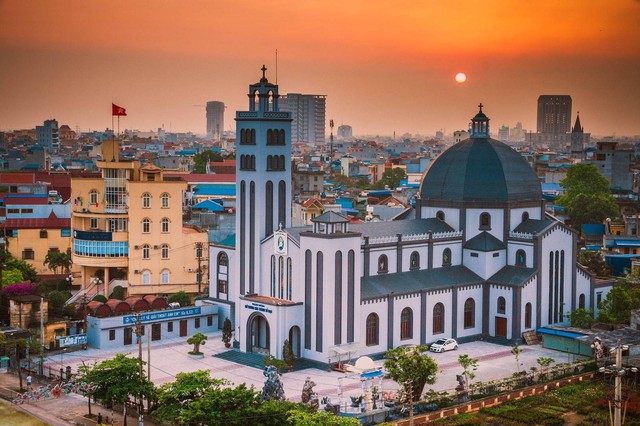
TP Nam Dinh located in the North of Nam Dinh province, is at the center of the Southern region of the Red River Delta. It is the second ancient city only after Hanoi, with a history of construction before Pho Hien and Hoi An, now over 760 years old. The area is also known as the “land of learning” of the country. After several times of division and merger, in 1996, Nam Dinh city officially became the provincial capital of Nam Dinh province until now.
TP Nam Dinh located in the North of Nam Dinh province, is at the center of the Southern region of the Red River Delta. It is the second ancient city only after Hanoi, with a history of construction before Pho Hien and Hoi An, now over 760 years old. The area is also known as the “land of learning” of the country. After several times of division and merger, in 1996, Nam Dinh city officially became the provincial capital of Nam Dinh province until now.
At the Conference on the announcement of the 2021-2030 Nam Dinh provincial planning, vision to 2050 and promotion of Nam Dinh province’s investment in 2024, Mr. Pham Dinh Nghi, Deputy Secretary of the Provincial Party Committee, Chairman of Nam Dinh Provincial People’s Committee said that Nam Dinh is planned to be developed until 2030 as a relatively developed province of the country, an important development center of the Southern region of the Red River Delta, with a target of an average economic growth rate of about 9.5% per year in the period of 2021-2030.
The average GRDP per capita by 2030 will be about 160-180 million VND. The export turnover in 2030 will be over 7 billion USD. The budget revenue from the local economy in 2030 will be over 18,000 billion VND. By 2030, there will be no more poor households; 100% of communes achieve new rural standards, 80% of districts achieve advanced new rural standards.
In addition, the province’s economy and society are organized and developed according to the model of “3 dynamic areas, 4 growth poles, 5 economic corridors” with the development orientation of a multi-industry and multi-sector economy, focusing on industrial development, services and marine and coastal economy.
Specifically, the three dynamic areas are: The expanded urban area of Nam Dinh city; The agricultural – rural area; The coastal economic area.
Four growth poles are: The central city area of Nam Dinh city; The urban center of Cao Bo, Yen Yen district; The urban center of Thinh Long – Rang Dong; The urban center of Giao Thuy district.
The five economic corridors are: The National Highway 10 corridor; The Quang Ninh – Hai Phong – Thai Binh – Nam Dinh – Ninh Binh – Ha Nam expressway corridor; The coastal road corridor; The new road corridor from Nam Dinh city – Lac Quan – Giao Thuy; The Ninh Binh – Nam Dinh – Hai Phong expressway corridor.
By 2050, Nam Dinh will become a modern economic center, an important development force of the Red River Delta region, with a comprehensive and modern infrastructure system, connecting trade, goods and services and culture of the region.
Escape from the “transportation gap”, opportunities for Nam Dinh to make a difference
Also at the Conference, regarding the development potential of Nam Dinh, Deputy Prime Minister Tran Hong Ha said that Nam Dinh is an historic and cultural land, a land of high culture and tradition.
Not only that, the area is also an area of education, leading national education, the area has been in the top of the country in terms of results of secondary education, sharp education for nearly 30 years.
Exploiting these advantages, Nam Dinh has achieved many important achievements, bringing about comprehensive changes in the fields of economy, society, national defense and security. Accordingly, the GRDP growth rate of Nam Dinh in 2023 reached 10.19%, ranks 3rd in the Red River Delta region and 6th in the country. The average GRDP per capita reached 54.9 million VND/person, an increase of 12.0%.
Socio-economic infrastructure has been developing in a comprehensive, synchronous and well-connected direction. Nam Dinh is a bright spot in the country’s new rural construction. In particular, the province’s education and training have continuously ranked among the top in the country in terms of quality for nearly 3 decades.
“The most valuable asset for Nam Dinh’s development is not advantages in land and natural resources but in human resources and talents,” Deputy Prime Minister Ha said.
According to the Deputy Prime Minister, with the investment in the coastal corridor of Quang Ninh – Hai Phong – Thai Binh – Nam Dinh – Ninh Binh – Ha Nam, the highway corridor of Quang Ninh – Hai Phong – Thai Binh – Nam Dinh – Ninh Binh, connected with the North-South highway, Nam Dinh will escape from being a transportation gap area. From there, promoting regional linkage, creating strong impetus, enhancing competitiveness, opening up space, new development potential.
Under Decision 1680/QD-TTg, the Ninh Binh – Hai Phong expressway project section passing through Nam Dinh and Thai Binh provinces has its starting point at the southern Đáy bridgehead of the Red River, in Nghia Thai commune, Nghia Hung district; and its ending point at the junction of the new national Highway 37 and the coastal road, in Thuy Trinh commune, Thai Thuy district, Thai Binh province.
The total investment including loan interest is 19.784 trillion VND, excluding loan interest is 18.927 trillion VND. Of which, the investor arranged 10.447 trillion VND (accounting for 52%), state capital contribution is 9.337 trillion VND (47%), including 6.200 trillion VND from the central budget; 1.462 trillion VND from Thai Binh province’s budget and 1.675 trillion VND from Nam Dinh province’s budget.
“This is a great opportunity for Nam Dinh to attract investment in coastal economic zones, industrial zones”, emphasized Deputy Prime Minister Tran Hong Ha.
Deputy Prime Minister Ha analyzed that high-quality human resources and great potential of clean energy, offshore wind power are infrastructure, solutions, opportunities for Nam Dinh to make a difference, and particularly attractive to attract investors; proactively choosing to develop fields towards green technology, circular economy, low-carbon economy, meeting new requirements for reducing greenhouse gas emissions, protecting the environment.
Alongside, Nam Dinh needs to focus on creating resources from planning itself, through attracting reputable and capable investors and consultants to concretize long-term visions into detailed plans with economic and technical values, determining urban and rural spaces… into differentiated values, several times higher than the value of land.
“Infrastructure must be developed synchronously, one step ahead with long-term quality planning and human-made attractive, valuable Nam Dinh,” Deputy Prime Minister said.
Deputy Prime Minister Tran Hong Ha believes that, with its historical and cultural traditions, dynamism, creativity and the aspiration for self-reliance of the people of Nam Dinh, we are confident that Nam Dinh will soon achieve the goal till 2030 as a fast, comprehensive, sustainable developing province; one of the important development centers of the Red River Delta.
























